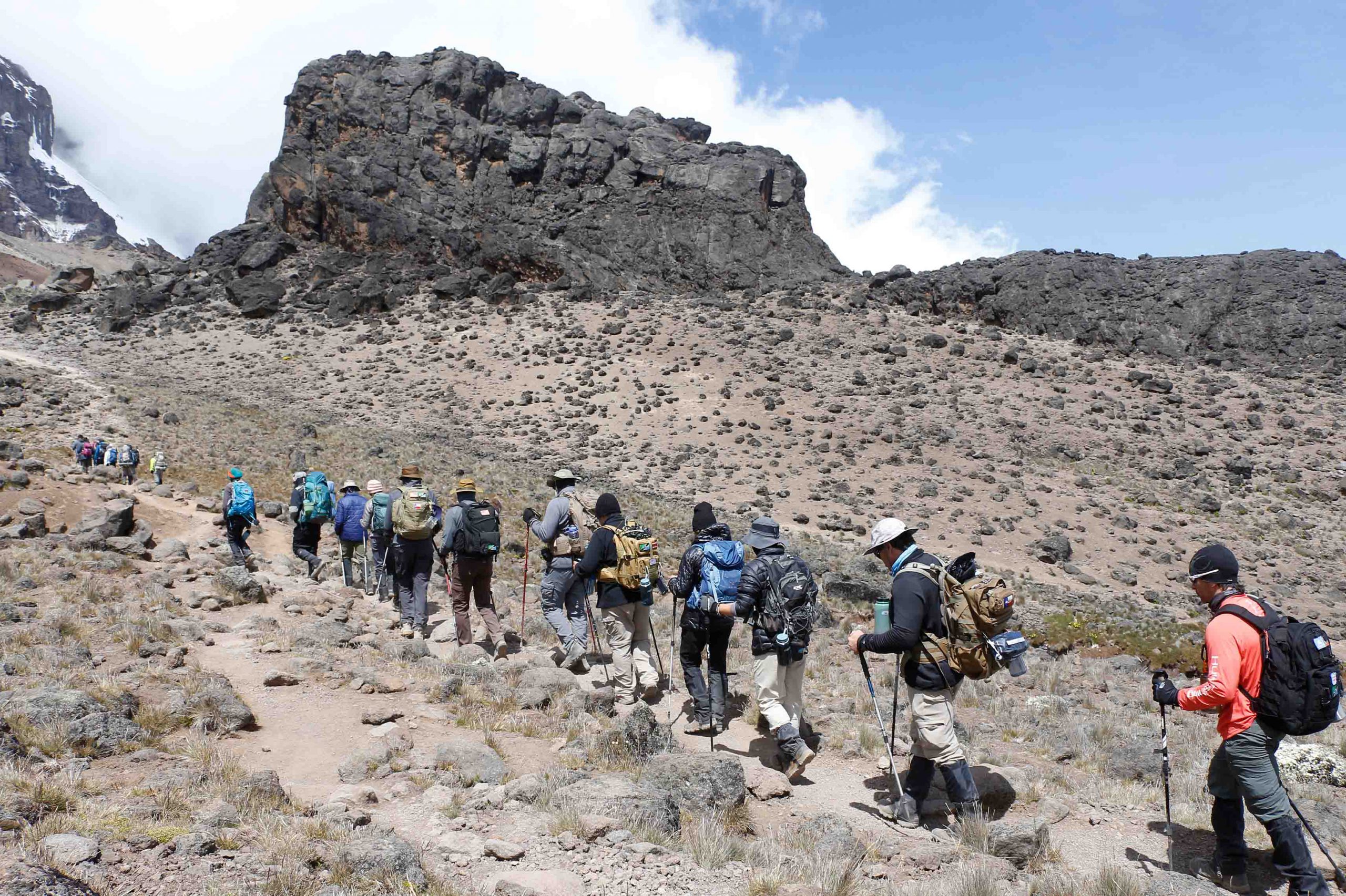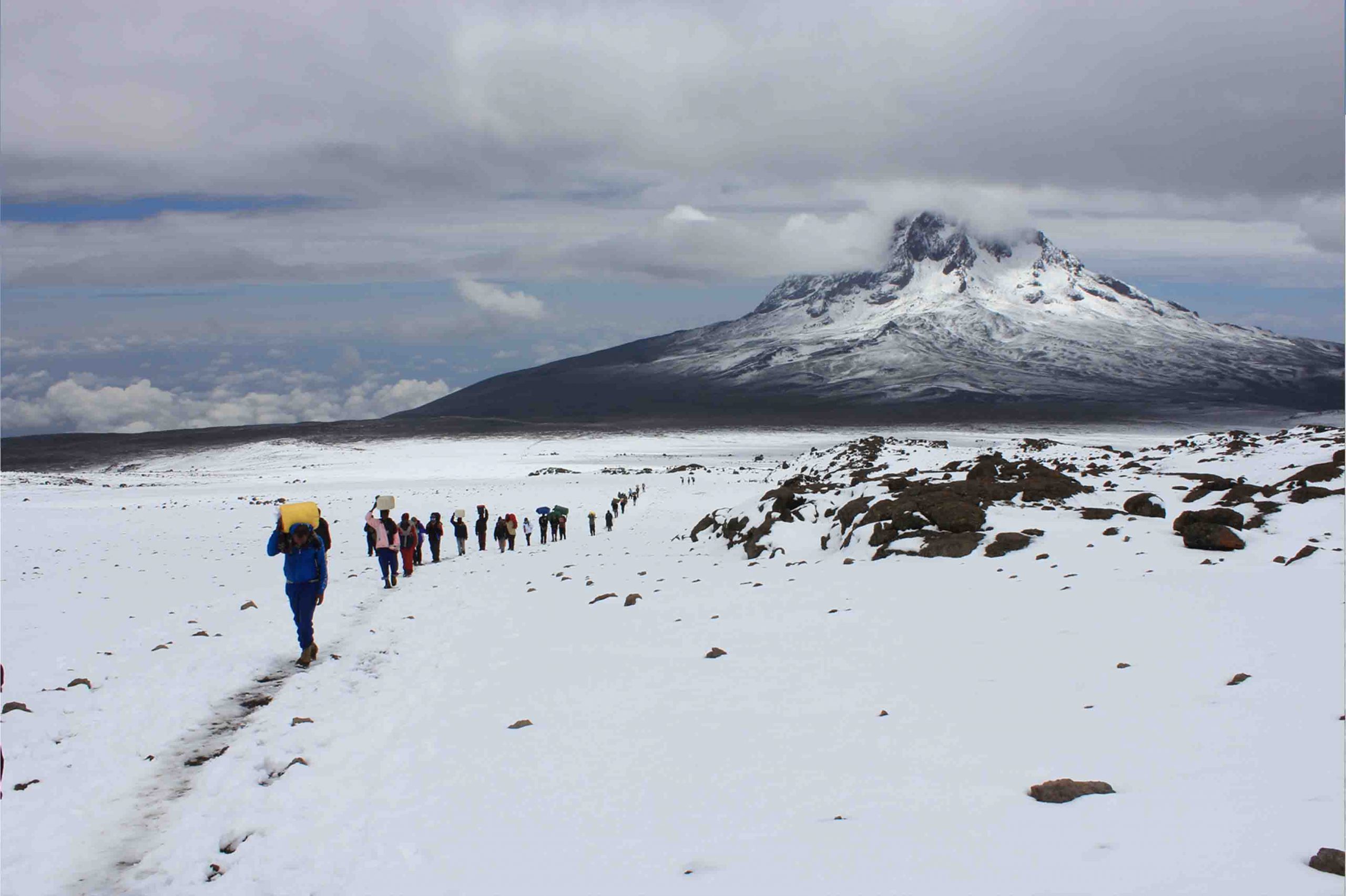info@tanzaniaextraordinarysafari.com
The temperature, the scenery, the amount of traffic on the trail, the level of difficulty, and safety should all be taken into account when determining the best time to climb Mount Kilimanjaro. However, weather is the primary component that affects all other factors. Because Mount Kilimanjaro is located in an equatorial climate zone, it only experiences wet and dry seasons rather than the traditional four (winter, spring, summer, and fall). April through May and November are the rainy months. It is practically hard to forecast when it will rain and when it won’t, just like in other tropical countries. All other months are considered to be the “dry season,” during which the majority of the days are sunny, but this does not imply a 100% assurance of clear sky.
There are two primary climbing seasons: January–February and July–August–September. While the weather is ideal for climbing Mount Kilimanjaro, many people take their summer or holiday vacations at those times.
Most climbers avoid the rainy seasons. The likelihood of hiking through drizzle is very high in April, May, and November. Rain softens the ground and makes the rocks slick, making your climb a slower and riskier journey. The rainy season in Tanzania, however, is especially beloved among landscape photographers. More precipitation results in more snow on the summit, making it possible to photograph Kilimanjaro’s snow-capped summit. Additionally, it is the only time of year when you can enjoy some peace while trekking through freshly fallen snow and escape the “rush hours” on the routes.


Beginning at the end of March and lasting through the middle of May is the “big” rainy season. In Tanzania, the coldest month of the year starts in April. Compared to the rest of the year, there are substantially less climbers during these months, although there is a significant probability of hiking in the rain during this period.
Rainfall becomes less frequent over time. Although Kilimanjaro experiences mostly dry and clear weather throughout these months, the nights are still chilly. We think June is significantly underappreciated as a climbing month because it is typically calm, sunny, and mild. Because of the superb weather and nearly private routes for your climbing party, June is a great month to go on an adventure. As the year goes on, more people start climbing. Beginning in July, most of the routes will be extremely crowded.
August through September mark Kilimanjaro’s peak climbing months. Because the days are clear and a little bit warmer than in June/July, the weather is especially favorable for climbing. The forest/moorland region may also be cloudy, and the southern roads may be covered in rain at the same time (Machame and Umbwe). It will, however, be sunny once you exit the rain forest.
Another unfairly overlooked month is October, when pleasant weather continues through mid-month and the number of climbers drastically decreases, providing you a great opportunity to enjoy Kilimanjaro excursions nearly by yourself. The weather becomes increasingly erratic at the end of October. This shouldn’t pose any big difficulties as long as you are prepared to weather the occasional rain.
The “little” rainy season begins in November. The wet weather could continue into December’s middle. The mountain will be covered in mist and the temperatures will have dropped, making your ascent more dangerous and risky while also being more difficult and exciting. Despite November’s unfavorable weather, it’s a fantastic time to shoot beautiful photos of the snow-capped peak of Mount Kilimanjaro and to take in the breath-taking views of the mist-covered mountain.
January through December The second busiest climbing season on Kilimanjaro is between Christmas and New Year’s. Although there is a good likelihood of rain and heavy clouds in the lower elevations of Kilimanjaro, the traffic is extremely heavy.
Climbers love the period from mid-January to mid-March. It is neither too cold or too wet; the weather is just right. Despite the possibility of occasional rain, the days are often dry. Due to the approaching “big rains” season, there is a greater chance of rain in the second half of March.
The four unique climatic zones and the temperature on Mount Kilimanjaro are correlated:
Warm and humid conditions prevail in the rainforest zone (800–3,000 meters). At 2,900 meters, the temperature in this region, which is densely covered in green foliage, ranges from 12 to 15 degrees Celsius (20 to 25 degrees Celsius during the day). Depending on the route, this is where you will spend the first one or two days of your climb.
The low alpine zone (3,000m–4,200m) is a semiarid region. The vegetation becomes more scarce as you ascend. The average temperature ranges from 5 to 10 °C (15 to 20 °C during the day) at 3,600 m, depending on the route you take.
The high alpine region (4,200m–5,000m) resembles a desert. In addition to making the last preparations for summiting at those elevations, here is where you will spend your fourth and fifth days on the Mount. At 5,000 meters, the average temperature is near the freezing threshold, although during the day, when the sun is shining, it is still pretty pleasant and comfortable.
The glacier zone (above 5,000m) on Mount Kilimanjaro’s peak has an average temperature of -6 °C. But keep in mind that every summit attempt often begins at midnight to get to the Uhuru peak by daylight. The temperature can drop to – 20°C when you are trekking at night. The temperature may feel colder than -40 °C during strong wind gusts. You will view one of the nicest photographs you have ever seen at the summit, lit by the rising sun, so it is absolutely worth braving the cold.
There are a few additional aspects of Kilimanjaro’s weather worth highlighting.
You might choose to climb when conditions are less than ideal, whether it’s to avoid the main rush hour or because it’s the only time that works for your vacation. If you do, take into account either the Rongai Route or the Northern Circuit Route. Compared to the other Kilimanjaro routes, the northern side of the mountain is significantly dryer. Furthermore, the same holds true if you want Kilimanjaro’s ideal weather but detest crowds. Make a sensible route choice. Rongai, Lemosho, and the Northern Traverse Route see less traffic than the well-traveled (and frequently congested) Machame and Marangu routes.
In our opinion at Rough & Dusty, you can enjoy Mount Kilimanjaro all year long. The difference is in the preparation: although you might only need one pair of Gore-Tex membrane gaiters, boots, and thermal underwear in September, you should bring three pairs of each in November to ensure that you can continue your climb comfortably even if you become completely drenched. Regardless of the route and time of year you decide to climb Mount Kilimanjaro, Rough & Dusty Travel will make every effort to make it an unforgettable experience.

P. O. Box 13620
Arusha, Tanzania
Explore the best of adventures and holidays with Tanzania Extraordinary Safaris from wildlife safaris, trekking, hiking, and beach holidays. We carry all your travel and planning logistics so you don’t need to worry about that.